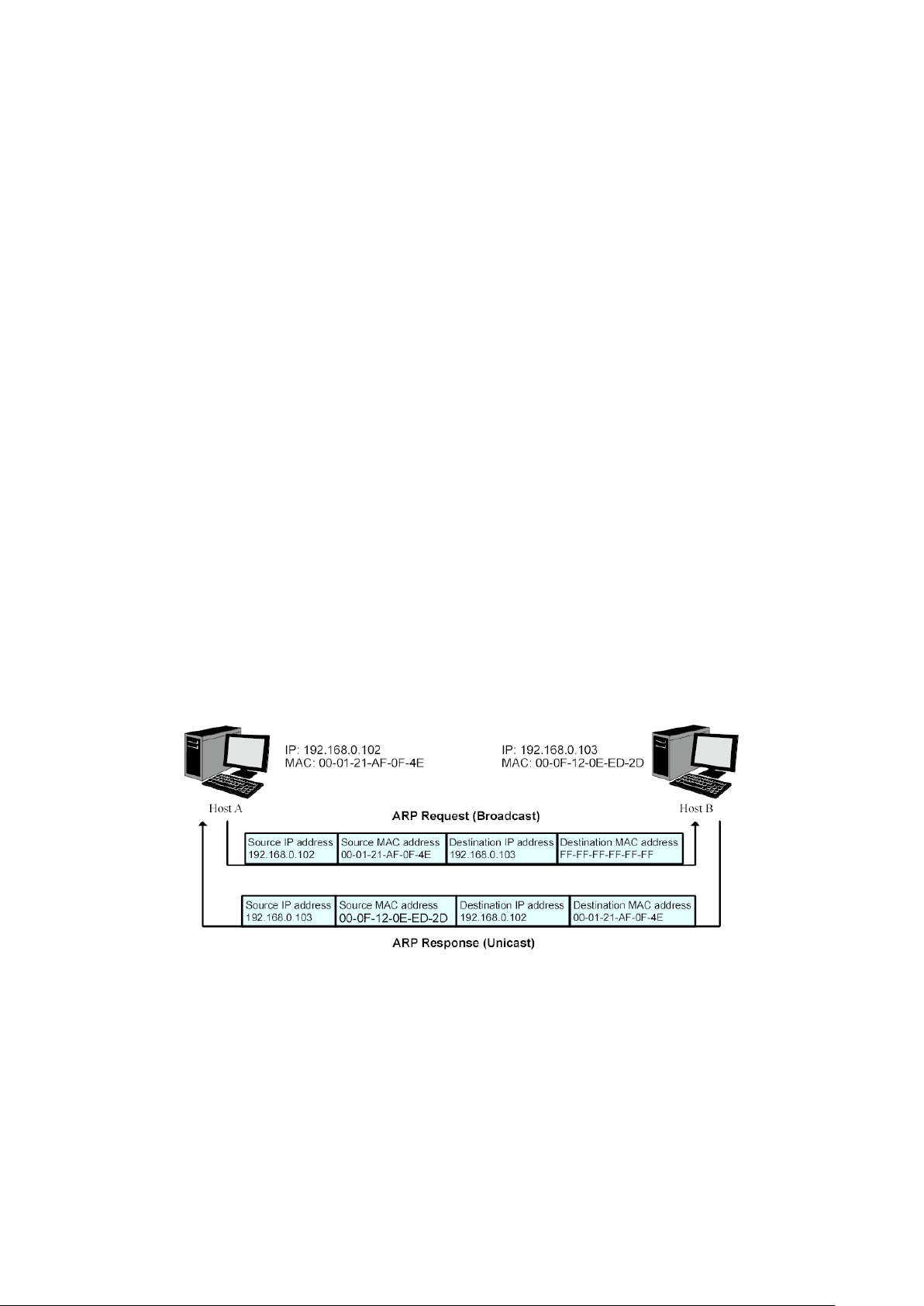Loading ...
Loading ...
Loading ...

IP Address:
Displays the IP Address of the Host.
MAC Address:
Displays the MAC Address of the Host.
VLAN ID:
Displays the VLAN ID here.
Port:
Displays the number of port connected to the Host.
Protect Type:
Displays the Protect Type of the entry.
Source:
Displays the source of the entry.
Collision:
Displays the Collision status of the entry.
• Warning:
Indicates that the collision may be caused by
the MSTP function.
• Critical:
Indicates that the entry has a collision with the
other entries.
12.1.3 ARP Scanning
ARP (Address Resolution Protocol) is used to analyze and map IP addresses to the
corresponding MAC addresses so that packets can be delivered to their destinations correctly.
IP address is the address of the Host on Network layer. MAC address, the address of the Host
on Data link layer, is necessary for the packet to reach the very device. So the destination IP
address carried in a packet need to be translated into the corresponding MAC address.
ARP functions to translate the IP address into the corresponding MAC address and maintain an
ARP Table, where the latest used IP address-to-MAC address mapping entries are stored.
When the Host communicates with a strange Host, ARP works as the following figure shown.
Figure 12-3 ARP Implementation Procedure
(1) Suppose there are two hosts in the LAN: Host A and Host B. To send a packet to Host B,
Host A checks its own ARP Table first to see if the ARP entry related to the IP address of
Host B exists. If yes, Host A will directly send the packets to Host B. If the corresponding
MAC address is not found in the ARP Table, Host A will broadcast ARP request packet,
which contains the IP address of Host B, the IP address of Host A, and the MAC address of
Host A, in the LAN.
151
Loading ...
Loading ...
Loading ...